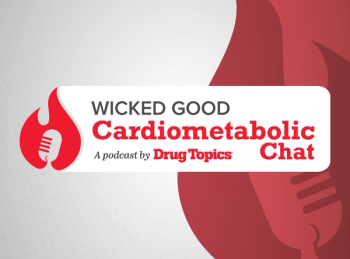
Quit stigmatizing naloxone
Epinephrine saves lives. So does naloxone. Why are they regarded differently?
Jeffrey FudinWhat do naloxone and epinephrine formulations for in-home use have in common? Both are lifesaving medications that have been around for more than 40 years. Naloxone, however, has at times been treated as the “redheaded stepchild” of emergency medicines, especially in connection with in-home use.
Few pharmaceuticals can serve as antidotes, and fewer can be used in the home.
Some that come to mind are parasympathomimetics such as neostigmine or edrophonium for tubocurarine exposure or myasthenia crisis respectively, antihistamines and epinephrine for anaphylaxis, flumazenil for benzodiazepines, etc.
While mortality from anaphylaxis has declined over the years, in large part as a result of in-home availability of epinephrine1, mortality and morbidity from opioid “overdose” have increased sixfold.2
As the number of cases of chronic pain and substance-abuse disorder continues to increase across the United States, opioid-related morbidity and mortality also continue to pose a costly and dangerous public health threat.
The bee-sting analogy
If someone allergic to bee stings were forced to become a beekeeper, would you deny that person an Epi-Pen?
Did you answer no? Then why should naloxone be denied as the standard of care for chronic pain patients who can find no alternative for relief but opioids?
Many federal and state efforts have sought to increase access to naloxone and reduce liability risk through the passage of Good Samaritan laws.3,4 However, there remains a stigma associated with naloxone that poses a barrier to widespread prescribing.
A common misconception holds that naloxone is for heroin users or “junkies” and labels those who carry in-home naloxone as drug addicts. Even some pharmacy professionals have succumbed to such a mindset.
The vocabulary problem
The term “overdose” is part of the problem. It has its own associated stigma.
Merriam-Webster defines overdose as “an amount of a drug or medicine that is too much and usually dangerous … also: a lethal or toxic amount (as of a drug)”.5
However, there are factors other than the amount of opioid administered (i.e., dose) that contribute to fatal respiratory depression. According to Dr. Zedler et al, “Substantial risk for serious opioid-related toxicity and overdose exists at even relatively low maximum prescribed morphine equivalent daily doses (MEDD), especially in patients already vulnerable due to underlying demographic factors, comorbid conditions, and concomitant use of CNS depressant medications or substances.”6
We need to educate ourselves. We need to shift away from using the term “overdose” and begin to employ a different term, such as “opioid-related toxicity.” This defuses part of the stigma and opens the door for a more comfortable conversation with patients about the possibility of opioid-related toxicity, including respiratory depression.
“Narcotic” is another derogatory term, defined by Merriam-Webster Dictionary Online as “a drug (such as cocaine, heroin, or marijuana) that affects the brain and that is usually dangerous and illegal.”
Its secondary medical definition is “a drug that is given to people in small amounts to make them sleep or feel less pain.” In other words, not only opioids are narcotics.7
The opioid toxicity talk
It is important to make clear to patients that a reference to opioid-related toxicity doesn’t mean that patients are “on too much pain medication” or that they “are addicted.”
Patients should understand that there are predisposing risk factors, some modifiable and some nonmodifiable, for opioid toxicity.
Patients also should be educated about the risk associated with drug-drug interactions.
And patients should be advised to communicate with their prescribers before starting new medications - even short-term antibiotics from urgent care.
A common scenario that could occur is when a patient on oxycodone goes to an urgent-care facility for a fungal infection and is prescribed fluconazole, which would decrease oxycodone’s metabolism and increase its levels.
Using the RIOSORD score validated by Zedler can open the door to a nonconfrontational professional dialogue with patients.
In this type of exchange, quantified hazards can be addressed with the patient one by one in an effort to lower the overall percentage risk of opioid-induced respiratory depression, much as we address a stepwise approach to lowering HbA1c in diabetes patients or cholesterol in patients with hyperlipidemia, starting first with diet and exercise.
The naloxone talk
When offering patients naloxone for in-home use, healthcare providers should focus on safety and the precaution of having emergency response at the ready, just as airports keep defibrillators, homes have fire extinguishers, and vulnerable patients make sure nitroglycerin is nearby for attacks of acute angina or even a rescue beta adrenergic inhaler for instances of acute unstable asthma.
If further clarification is necessary, as a pharmacist you might point out that in 2013 there were approximately 3,300 accidental opioid deaths in children under the age of five, or bring up scenarios in which naloxone could be a life-saving asset, such as the possibility of accidental ingestion by another family member or even a pet.8
Underutilized
Naloxone remains an underutilized life-saving device while the opioid pandemic continues to grow.
Opioids will continue to claim more lives if no proactive measures are employed. A standard of care for opioid prescribing should include screening for overdose or respiratory depression and continuous monitoring throughout therapy.
Patients should be educated on risk factors and those at high risk should be offered naloxone for in-home use.
References
1. American Academy of Allergy, Asthma & Immunology (AAAAI) 2013 Annual Meeting: Abstract 511. Presented February 24, 2013.
2. Rudd RA, Aleshire N, Zibbell JE, et al. Increases in drug and opioid overdose deaths - United States, 2000–2014. Centers for Disease Control and Prevention Morbidity and Mortality Weekly Report (MMWR). 2016 Jan 1;64(50-51):1378-1382.
3. Davis CS, Carr D. Legal changes to increase access to naloxone for opioid overdose reversal in the United States. Drug Alcohol Depend. 2015;157:112-120.
4. Network for Public Health Law. Legal interventions to reduce overdose mortality: Naloxone access and overdose Good Samaritan laws. Updated April 2016. http://bit.ly/networkforphl. Accessed April 29, 2016.
5. Merriam-Webster Dictionary Online. http://www.merriam-webster.com/dictionary/overdose.
6. Zedler B, Xie L, Wang L, et al. Development of a risk index for serious prescription opioid-induced respiratory depression or overdose in Veterans’ Health Administration patients. Pain Med. 2015;16(8):1566-1579.
7. Merriam-Webster Dictionary Online. http://www.merriamwebster.com/dictionary/narcotic.
8. Burghardt LC, Ayers JW, Brownstein JS, et al. Adult prescription drug use and pediatric medication exposures and poisonings. Pediatrics. 2013; 132(1):18-27.
Jeffrey Fudinis clinical pharmacy specialist, Stratton V.A. Medical Center, Albany N.Y.; CEO, Remitigate LLC, Delmar N.Y.; and adjunct associate professor, Western New England University College of Pharmacy. He is adjunct assistant professor at the University of Connecticut School of Pharmacy and owner and managing editor of PainDr.com. Contact him at jeff@paindr.com. Disclosures: Astra Zeneca (speakers bureau, advisory board); DepoMed (advisory board); Endo (speakers bureau, consultant); Kaléo (speakers bureau, advisory board); Kashiv Pharm (consultant); KemPharm (consultant); Millennium Health LLC (speakers bureau); Remitigate LLC (founder, owner); Scilex Pharmaceuticals (consultant); and Pernix (speaker).
Mena Raouf graduated from Albany College of Pharmacy and Health Sciences with a concentration in Nephrology and is pursuing a PGY-1 Pharmacy Practice Residency at the VA Tennessee Valley Healthcare System.
This article is the sole work of the authors; it does not reflect the opinions of employers, employee affiliates, or pharmaceutical companies.
Newsletter
Pharmacy practice is always changing. Stay ahead of the curve with the Drug Topics newsletter and get the latest drug information, industry trends, and patient care tips.











































































































































































































